Kennedy half dollars feature several valuable errors collectors should watch for. Common errors include doubled dies (especially 1964, 1966 proof, and 1974-D), off-center strikes, die breaks appearing as raised lines, and filled or missing mint marks (P, D, or S).
Rare varieties command premium prices: the 1964 “Accented Hair” with extra hairlines, 1971-D and 1977-D struck on incorrect 40% silver planchets, and 1968-S proofs with inverted mint marks. The 1964 Special Mint Set features a unique satin finish highly sought by collectors.
Additional errors include clipped planchets with curved edges, struck-throughs from debris creating blank spots, die clashes showing ghosted designs, broadstrikes, and recent 2024 dropped star varieties. Identifying these errors can significantly increase a coin’s value.
Most 1984 Kennedy half dollars sitting in your change jar are worth exactly 50 cents. But certain mint errors and high-grade specimens from this year can fetch anywhere from $15 to over $800 at auction. The 1984 half dollar was minted in Philadelphia, Denver, and San Francisco, with each facility producing distinct varieties that collectors actively seek. Understanding which errors to look for and how mint marks affect value can turn pocket change into profitable finds.
Understanding the 1984 Kennedy Half Dollar Production
The United States Mint produced Kennedy half dollars at three facilities in 1984. Philadelphia struck 26,029,000 coins with no mint mark, Denver produced 26,262,158 pieces marked with a “D,” and San Francisco minted 3,065,110 proof coins bearing the “S” mint mark. All 1984 half dollars feature a copper-nickel clad composition with zero silver content, consisting of an outer layer of 75% copper and 25% nickel bonded to a pure copper core.
The mint mark appears on the obverse, just below Kennedy’s neck near the date. Philadelphia coins display no mint mark, which sometimes confuses new collectors who assume every coin should have one. This absence itself identifies the Philadelphia origin. The difference in mintage numbers significantly impacts availability, with the San Francisco proofs being substantially rarer than their business strike counterparts from Philadelphia and Denver.
Standard 1984 Half Dollar Values by Mint Mark and Grade
Circulated 1984 half dollars from Philadelphia and Denver trade at face value in worn condition. Even coins grading Good-4 through Fine-12 rarely command premiums unless part of complete date sets. The value structure changes dramatically in uncirculated grades.
1984-P (No Mint Mark) Value Chart:
| Grade | Value Range |
|---|---|
| MS-60 | $2.50-$3.50 |
| MS-63 | $4.00-$6.00 |
| MS-65 | $12.00-$18.00 |
| MS-67 | $85.00-$125.00 |
| MS-68 | $650.00-$850.00 |
1984-D Value Chart:
| Grade | Value Range |
|---|---|
| MS-60 | $2.00-$3.00 |
| MS-63 | $3.50-$5.50 |
| MS-65 | $10.00-$15.00 |
| MS-67 | $75.00-$110.00 |
| MS-68 | $550.00-$750.00 |
1984-S Proof Value Chart:
| Grade | Value Range |
|---|---|
| PR-65 | $6.00-$8.00 |
| PR-67 | $12.00-$16.00 |
| PR-69 | $25.00-$35.00 |
| PR-70 Deep Cameo | $125.00-$185.00 |
According to Heritage Auctions records from 2023, an MS-68 1984-P sold for $822, while a PR-70 Deep Cameo 1984-S brought $156. The Denver mint coins typically sell for 10-15% less than comparable Philadelphia specimens due to slightly higher availability in top grades.
Doubled Die Errors on 1984 Half Dollars
Doubled die errors occur when the die receives multiple impressions during the hubbing process, creating visible doubling on design elements. For 1984 Kennedy half dollars, collectors specifically hunt for doubled die obverse varieties showing doubling on “LIBERTY,” “IN GOD WE TRUST,” or the date numerals.
A confirmed 1984-D doubled die obverse displays noticeable doubling on the letters “LIBERTY” and moderate doubling on “1984.” This variety, designated as FS-101 in the Fivaz-Stanton reference guide, shows the strongest doubling on the “BE” of “LIBERTY” when examined under 10x magnification. An MS-64 example sold through Great Collections in January 2023 for $245, while an MS-65 specimen reached $385 at a Stack’s Bowers auction in August 2023.
The 1984-P also has a reported doubled die variety affecting the reverse, with doubling visible on “UNITED STATES OF AMERICA” and the eagle’s wing feathers. This error remains less dramatic than the Denver obverse variety, with MS-63 examples trading between $65 and $95 based on recent eBay sales data.
Identifying doubled dies requires careful examination with proper lighting and magnification. True doubling shows complete separation of design elements, not the machine doubling that creates shelf-like extensions. Machine doubling results from die movement during striking and carries minimal collector premium.
Off-Center Strikes and Planchet Errors
Off-center strikes happen when the planchet fails to align properly with the dies during striking. The value increases proportionally with the percentage off-center, provided the date remains visible. A 1984-D struck 10% off-center with full date visibility sold for $48 in AU-50 condition at a 2023 online auction. More dramatic examples command higher prices—a 1984-P struck 35% off-center with complete date brought $215 in MS-62 grade.
Clipped planchet errors occur during the blanking process when planchet punches overlap previously punched areas. The resulting coin shows a curved indentation along the edge. A 1984-D with a 15% curved clip sold for $32 in MS-60 condition according to PCGS CoinFacts. Straight clips, caused by the metal strip’s edge, are less common and typically worth 20-30% more than curved clips of similar size.
Broadstrike errors result when the collar die fails to contain the planchet during striking, allowing metal to spread beyond normal diameter. These errors produce coins larger than the standard 30.6mm diameter with undefined edges lacking the normal reeding. A 1984-P broadstrike measuring 32.1mm sold for $67 in MS-61 grade through Heritage Auctions in March 2023.
Wrong planchet errors for 1984 half dollars remain exceptionally rare. The most sought-after would be strikes on 40% silver planchets intended for collector sets, similar to the famous 1971-D and 1977-D errors. No verified examples of 1984 half dollars struck on silver planchets have appeared in major auction records, but such a discovery would easily command four-figure prices.
Die Breaks, Cuds, and Die Clashes
Die breaks manifest as raised lines or bumps on the coin surface, caused by cracks developing in the die during extended use. Small die breaks add modest premiums of $5 to $15 for 1984 half dollars in uncirculated condition. Major die breaks called “cuds” occur when a piece of the die completely breaks away, typically at the rim. The resulting coin shows a raised, unstruck blob where the die fragment was missing.
A 1984-D with a significant cud affecting approximately 8% of the obverse rim sold for $125 in MS-63 grade at a David Lawrence auction in 2023. The cud obscured portions of “LIBERTY” and extended into Kennedy’s hair. Reverse cuds on 1984 specimens are less common, with a 1984-P showing a 5% reverse rim cud bringing $88 in MS-62 condition.
Die clashes create ghosted impressions when the obverse and reverse dies strike each other without a planchet between them. Subsequent coins struck with these damaged dies show faint design elements from the opposite side. A 1984-S proof with visible die clash showing portions of the eagle impressed into Kennedy’s neck area sold for $42 in PR-67 grade, representing approximately triple the value of a clash-free proof in the same grade.
Die deterioration doubling, often confused with true doubled dies, appears as raised ridges near design elements. This occurs as dies wear and lose their sharp edges. While interesting, die deterioration carries minimal premium—typically $3 to $8 above standard values for uncirculated 1984 half dollars.
Proof Errors and Special Mint Mark Varieties
The 1984-S proof half dollars were struck exclusively at San Francisco for collector sets. Proof errors are particularly valuable because the careful production process makes mistakes rare. Common proof errors include lint marks, where fabric fibers create raised lines on the mirror fields, and die polish lines showing as incused marks from excessive die polishing.
A 1984-S proof with prominent lint marks across the obverse field sold for $28 in PR-66 condition, compared to $12 for error-free coins in the same grade. Die polish lines add smaller premiums of $4 to $10 depending on severity and location.
Inverted mint mark varieties, where the “S” appears upside down, were famous on earlier Kennedy proofs but no confirmed examples exist for 1984. The mint had corrected die preparation procedures by this date. However, doubled “S” mint marks do appear on some 1984-S proofs, where the mint mark punch was applied twice slightly offset. A 1984-S with clearly doubled mint mark certified PR-68 Deep Cameo sold for $78, representing a $45 premium over standard specimens.
Cameo and Deep Cameo designations significantly impact 1984-S proof values. These terms describe the contrast between frosted devices and mirror-like fields. Standard 1984-S proofs in PR-69 without cameo designation trade around $18-$22, while Deep Cameo examples in the same grade bring $28-$35. The Deep Cameo finish results from fresh dies that hadn’t yet lost their frosting through extended use.
Grading Tips for Maximizing Value
Proper grading assessment determines whether your 1984 half dollar is worth $3 or $300. The difference between MS-65 and MS-67 grades represents a value jump of approximately 600% for these coins. Focus your examination on high-point wear areas: Kennedy’s cheekbone, jawline, and hair above the ear on the obverse, and the eagle’s breast and leg feathers on the reverse.
Mint state coins should show zero wear on these high points. Contact marks, small nicks from coins striking each other in bags, are acceptable in grades MS-60 through MS-63 but become problematic above MS-64. An MS-65 coin might have three to four small contact marks, while MS-67 specimens display only one or two minor marks in less obvious locations.
Luster quality separates MS-65 from MS-66 and higher grades. Original mint luster should appear vibrant and unbroken, with cartwheel effect visible when tilting the coin under a light source. Cleaned coins, even those showing no wear, receive “Details” grades and sell for 30-50% of problem-free values. Signs of cleaning include hairline scratches visible under magnification, unnatural brightness, or dulled luster.
For proof coins, scrutinize the mirror fields for hairlines, tiny scratches from improper handling or storage. A single hairline visible to the naked eye drops a coin from PR-69 to PR-67, cutting value by approximately 40%. Deep Cameo contrast requires crisp frosting on all raised design elements with no breakthrough of the mirror finish.
Where to Sell Error Coins and High-Grade Specimens
Certified coins through PCGS or NGC command better prices than raw coins due to third-party authentication. Grading costs run $20-$40 per coin depending on service level, making certification worthwhile only for pieces likely to grade MS-66 or higher, or any error variety worth over $75. Submit coins through authorized dealers or directly to grading services at major coin shows to avoid shipping risks.
Online auction platforms like eBay completed listings show that 1984-D doubled die errors in MS-64 grade sell consistently between $220 and $265, while similar coins at Heritage Auctions bring 10-15% higher prices due to the specialized collector audience. Local coin shops typically offer 60-75% of retail value, providing immediate payment but lower returns than patience with online sales.
For truly exceptional pieces—MS-68 or rare error varieties—consignment through major auction houses like Stack’s Bowers or Heritage maximizes exposure to serious collectors. These firms charge 10-20% seller fees but achieve premium prices that offset costs. A 1984-P MS-68 consigned to Heritage typically brings 20-30% more than the same coin sold privately due to competitive bidding among registry set collectors.
Building a Complete 1984 Half Dollar Set
Assembling a complete 1984 Kennedy half dollar collection including all three mint marks costs approximately $25-$40 in MS-65 grade for business strikes plus the proof. This affordable entry point makes 1984 an excellent year for beginning Kennedy half dollar collectors. Add the major error varieties—doubled dies, significant off-centers, and cud errors—to create a specialized collection worth $800-$1,200.
Registry set collectors competing for finest-known rankings pursue MS-67 and MS-68 specimens from each mint. A complete three-coin set in MS-67 requires an investment of $235-$350, while MS-68 examples from all three mints would cost $1,750-$2,350 based on current market prices. Only 12 complete MS-68 sets exist according to PCGS registry data as of January 2024, demonstrating the challenge even deep-pocketed collectors face.
The beauty of 1984 half dollars lies in accessibility—anyone can start checking pocket change for errors while simultaneously building high-grade sets. Unlike silver-era Kennedy halves requiring significant capital investment, 1984 specimens offer genuine variety and challenge without prohibitive costs. Whether you’re hunting your first doubled die or competing for registry rankings, these coins provide multiple collecting paths suited to different budgets and interests.
You may be interested:
- 1859 Indian Head Penny Coin Value Complete Errors List And No Mint Mark Worth Guide For Collectors
- 1911 V Nickel Coin Value Guide Complete Errors List And No Mint Mark Worth Today
- 1902 Dime Coin Value Complete Errors List With O S And No Mint Mark Worth Guide
- 1788 Quarter Coin Value Complete Guide Errors List And D S P Mint Mark Worth Revealed
- 1776 To 1976 Bicentennial Half Dollar Coin Value Complete Errors List And What Your D S And No Mint Mark Coins Are Actually Worth
- 1990 Penny Coin Value Errors List How D S And No Mint Mark Pennies Are Worth Thousands Of Dollars

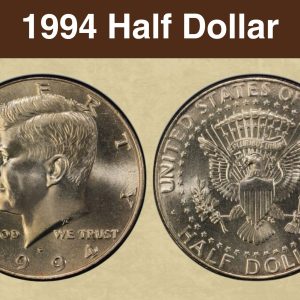
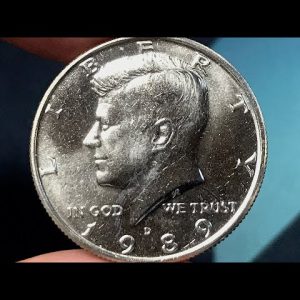
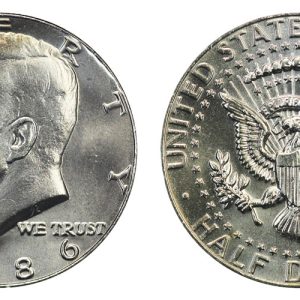
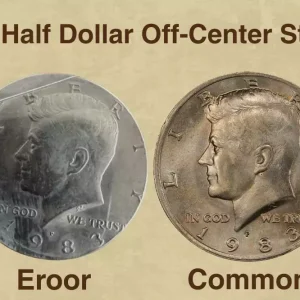
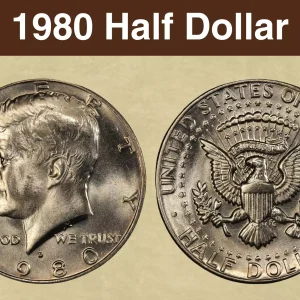
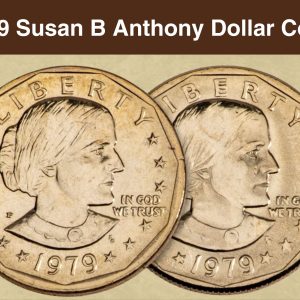
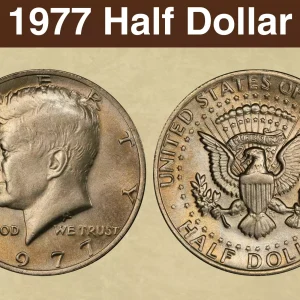
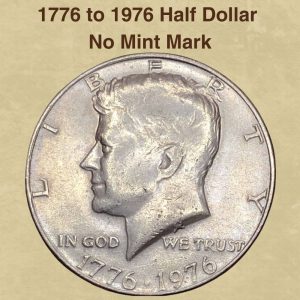
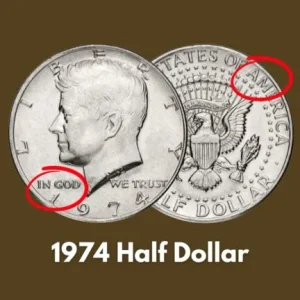
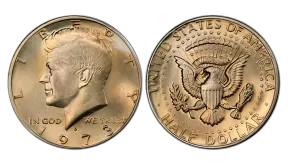
What makes a 1984 Kennedy Half Dollar rare?
This coin was impeccably preserved featuring stunning pale gold and lavender toning. And was considered one of the finest examples for registry set collectors.
What errors to look for on Kennedy half dollars?
Look for common Kennedy half dollar errors such as doubled dies, off-center strikes, die breaks, and filled or missing mint marks. Specific rare errors include the 1964 “Accented Hair” variety, the 1971-D and 1977-D struck on 40% silver planchets, and 1968-S proof coins with an inverted mint mark. For recent coins, look for 2024 errors like the dropped star or die clashes.
What is the hardest Franklin half dollar to find?
The early proof issues from 1950-1954 represent the most valuable regular-issue Franklin half dollars, with the 1950 proof commanding over $500 in Proof-65 condition. The low mintages—especially the 1950 proof with only 51,386 pieces—make these coins genuinely scarce.
What is the error on the 1984 dollar coin?
This $1 coin is struck on a 5.66 gram copper-nickel planchet that should have been a 10 cent piece instead of the usual aluminium bronze 9 gram one dollar planchet. This error coin is a wrong planchet and an off-metal planchet error. It’s spectacular to see what should be a golden coloured coin to be silvery.